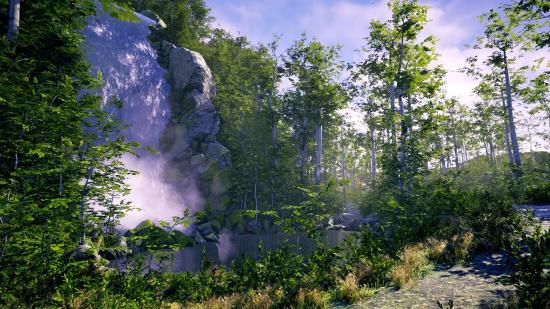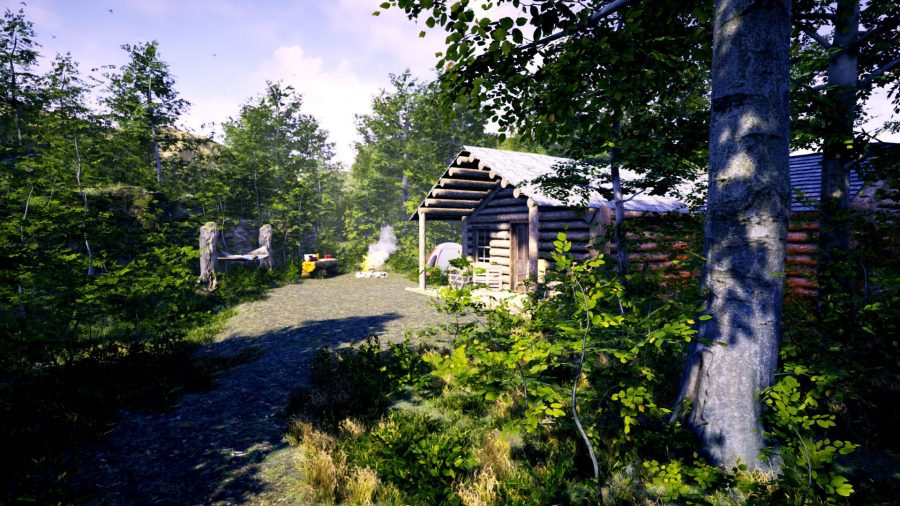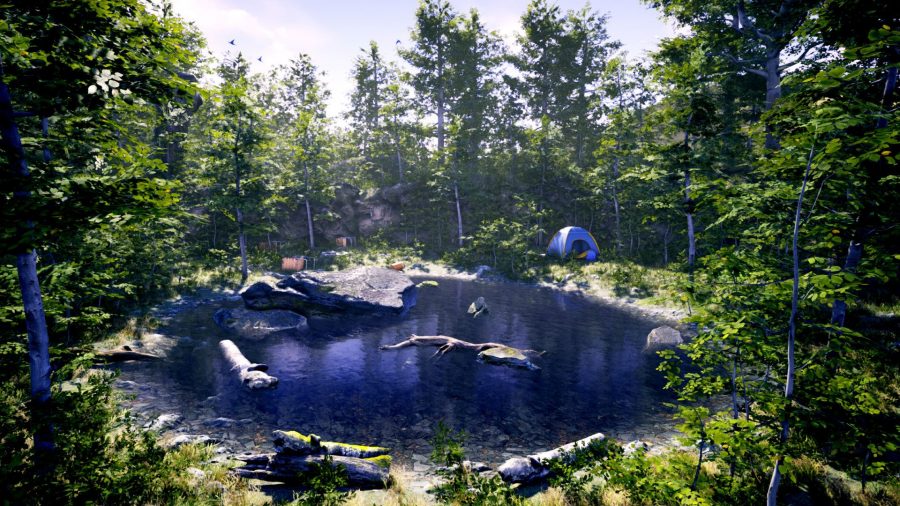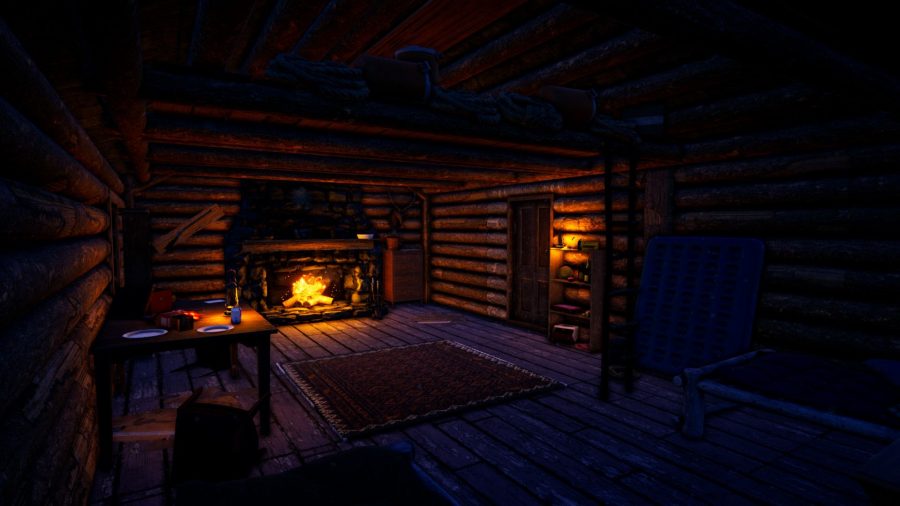Since the likes of Dear Esther and Gone Home, the first-person adventure genre has been enjoying a near decade-long boom. And while not every release can match the quality of the games which catalysed this long run of interest, we’ve seen some truly remarkable games such as Firewatch, Virginia, What Remains of Edith Finch, and The Vanishing of Ethan Carter.
The Fabled Woods is an adventure game being created by just one man, Joe Bauer, with the lofty ambition of matching the storytelling prowess of these genre icons. The game releases later this year and centres on three intertwining stories that players must unravel by putting on their detective hats and searching for clues around the forest.
Although similarities can be drawn with other games in the genre, Bauer also wants to offer something new. “What I do differently is combine Gone Home’s inspecting and learning the world with the forest from Firewatch. I combine both into a playable experience,” Bauer tells us. “You can inspect things, but the game focuses on the world you’re in as well. What’s in the forest? Rather, what do you not know about the forest?”
As you might imagine, to create a forest vast enough to get lost in, and realistic enough to evoke the awesome beauty of the American wilderness, was not an easy feat for a solo developer. “Having this much foliage in the world was a struggle,” Bauer explains. “I wanted a dense, realistic forest that I remember from childhood. I have almost one million instances of foliage being utilised in our forest. The way Unreal handles these instances is what made this engine the choice I went with.”
As with some other games explored in this series, Bauer actually started building The Fabled Woods in Unity. However, he soon began “running into some limitations due to performance and the assets I was using. I decided to try the same assets within UE4 and found that it had doubled the framerate.” This allowed him the freedom to “make the game I wanted to make.”
Offering a peek behind the curtain into one of the game’s more challenging design elements, Bauer explains, “I implemented a system I use to teleport the player around to different levels. Without giving too much away, I use portals to show the player more of the story without loading screens”. By using Unreal Engine’s level streaming system, the developer was able to create everything he needed in “one huge, singular level. I can then load or unload the specific levels I need to show and bring the player to. Without this system, I would not be able to do this”.
With The Fabled Woods placing such an emphasis on the aesthetics of its world, minimising load screens was only the first of many technical challenges the dev had to overcome. In order to make the forest look as believable as possible, the lighting and arrangement elements are equally essential. “I’m actually still changing the lighting and how the forest looks. It’s an ebb and flow process. I’m making sure I make the most believable forest, but don’t want it to only run on an RTX 2080Ti”. It’s a sentiment we’re sure many players (and their wallets) will share.

Videogame graphics have been edging closer to photorealism. The fact that just one person can create a game world as pleasing to the eye as that of The Fabled Woods is a testament to both the creativity of that person and to the engine itself. But The Fabled Woods presents such an idealised version of the American woodland that an odd question occurs: graphics power may be yet to achieve photorealism, but the arrangement of the world, even down to such elements as the lighting that previously only a god could control, is all now within the hands of the developer. Might it be possible to make a game that’s actually too beautiful to believe?
“We’re only moving closer and closer to better and better graphics. Will we ever go too far? I don’t think so,” Bauer says. “Not all games benefit from graphics either – look at pixel art or stylised games. No matter what virtual space you’re creating, you always have to keep in mind real-life idylls. Things that feel natural to the player because it feels natural in real life”.
The Fabled Woods seems to be striking this balance well. Making full use of the features offered by the engine, Bauer is creating a picturesque woodland setting that unquestionably evokes a “real-life idyll”, yet early screenshots show a beautiful woodland lake besmirched by collapsed folding chairs and a polyester tent. It does indeed seem “natural to the player because it feels natural in real life” – an implausible paradise, this is not.
Read more: Check out the best story games on PC
The world of The Fabled Woods isn’t just a pretty distraction either – it actually plays a significant role in the game’s enigmatic plot. “Not to give any spoilers, but the world changes as you learn more of the story”, Bauer reveals. “The world doesn’t change physically too much, but you learn of the events that happened and that knowledge changes how you see the world”.
While the breadth of options available in Unreal Engine can be a little daunting at first, particularly to those used to Unity, the developers featured in this series generally find that the opportunities provided by Unreal afford them far more creative freedom to bring their vision to life. Bauer sums this up: “Unreal tools are a little more complicated to learn, but much more powerful”.
The Fabled Woods is due to release later this year – head on over to the Steam page for more information. Unreal Engine 4 is now free. Unreal Engine 5 is due to release next year.
In this sponsored series, we’re looking at how game developers are taking advantage of Unreal Engine 4 to create a new generation of PC games. With thanks to Epic Games and CyberPunch Studios.




